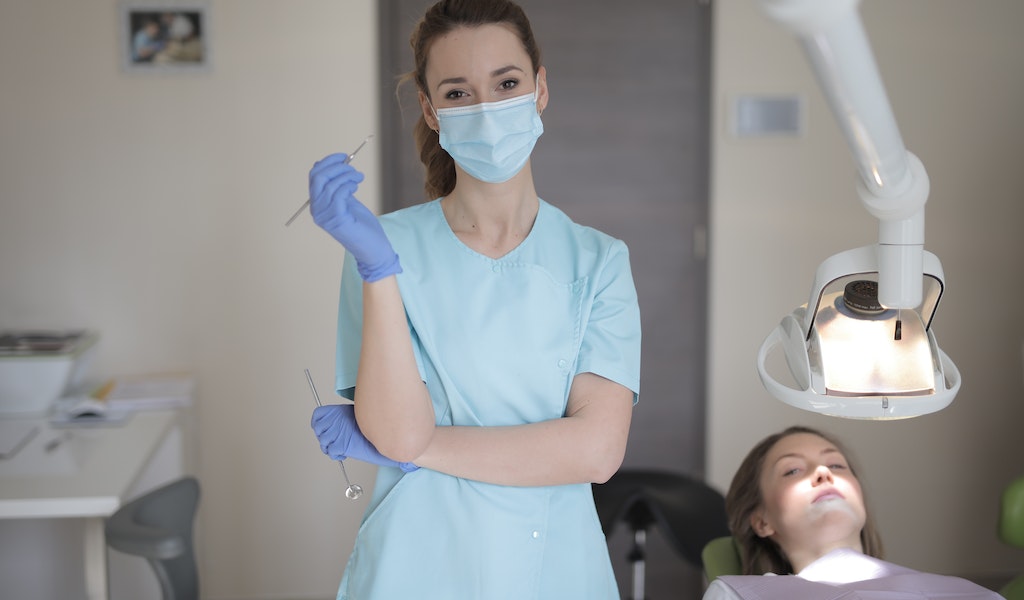Cleanliness is crucial in a vast array of settings. From basic domestic cleanliness in any home (especially the kitchen and bathroom) to cleanliness in retail, hospitality, public transport, and other community areas, maintaining a clean environment is essential to prevent the transmission of bacteria and other disease-causing microorganisms.
We can take this a step further, too. In clinical settings like hospitals, doctors’ surgeries, beauty salons, and dentistry, simple cleanliness is not enough, and these spaces must be hygienic, with specific areas and tools requiring sterility.
What Does “Hygienic” Mean?
“Hygiene” is a term that refers to the actions taken to the spread of prevent infection and disease. It includes everything from one’s personal hygiene (hand washing, hair washing, tooth brushing, showering), food-preparation hygiene (using clean surfaces and utensils, avoiding cross-contamination with raw meat, etc), to civil utilities like water sanitation.
A hygienic setting minimises germs to what is generally considered a safe level. A sterile setting strives for the elimination of all germs.
Practicing good hygiene improves the likelihood of desired health outcomes, and in a medical, dental, healthcare, or other setting it protects all parties from preventable harm that can be caused by transmissible disease.
Why is Hygiene in Dentistry so Important?
Hygienic practices aim to prevent disease. In dental settings, the potential for spread of everything from blood-borne infections to COVID-19 must be mitigated.
One way to achieve this is through the implementation of Standard Precautions. These are the minimum infection prevention procedures required to prevent the risk of transmitting disease between a patient, staff, and other patients.
Standard (or Universal) Precautions apply to the care of all patients regardless of whether they are suspected, confirmed, or cleared of potentially being an infection risk.
Types of Hygiene in Dentistry
1. Hand Hygiene – the first line of defence, it helps to minimise the transmission of harmful microorganisms. Dentists and other clinical staff must wash their hands before, after, and between patients, before and after using gloves, and before and after eating. Treatment rooms should all be equipped with basins with fresh running water, disinfecting liquid soap, and single-use hand towels. Alcohol-based hand sanitiser should be readily accessible to staff and patients throughout the facility., including at its entrance. Signage should be displayed to encourage its use.
2. Sharps Injury Prevention – dental needles must be used with care and disposed of properly. Implement practices for safe sharps handling and protocol-based performance of injections and incisions. These sharps are a biohazard and needles should never be recapped. Use industry-standard sharps disposal containers.
3. Aseptic Techniques – to reduce the risk of contamination during dental procedures, including dental surgery. Use sterilised or single-use instruments and equipment (dental burs, handheld tools, etc) and maintain an aseptic treatment field for all procedures. Clinical dental equipment must be sterilised to inactivate or eliminate all living microorganisms from equipment used in patients’ mouths, as well as for IV injections. Dental clinics should have high-quality ultrasonic cleaners, autoclaves, and other sterilisation supplies.
4. Personal Protective Equipment – Dentists should use disposable gloves (nitrile or latex gloves for dental as appropriate), face masks, face shields, and/or eye goggles, and surgical gowns where appropriate.
5. General Cleaning & Disinfection – the entire dental clinic must be kept clean and disinfected – from frequently touched surfaces like the reception counter and waiting room surfaces to dental chairs and reusable patient care equipment that doesn’t require sterilisation.
6. Waste Disposal – an often forgotten aspect of hygiene, proper waste handling and disposal is crucial. It includes the industry-standard management of contaminated clinical waste.
Conclusion:
Proper hygiene in dental clinics is essential for both individual and wider community health. Dentists and clinic managers must adopt and promote the right cleaning, disinfecting, and sterilisation practices, and take personal responsibility for hand hygiene and using PPE as appropriate.

















